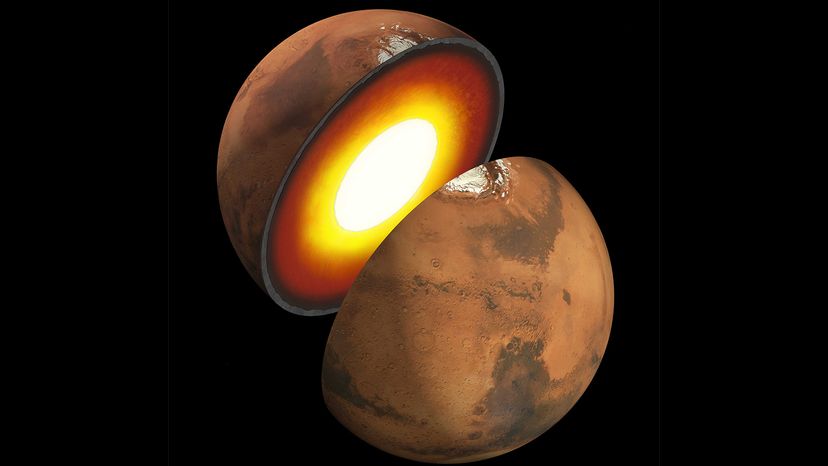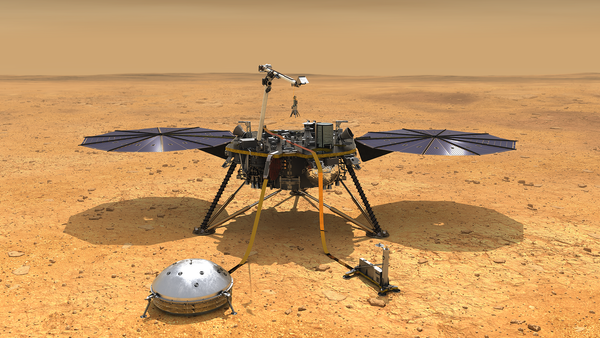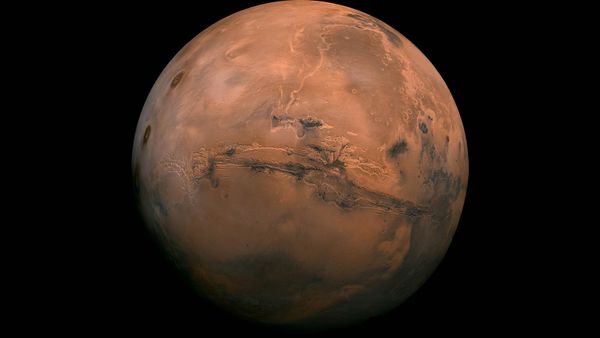
Ever since NASA's InSight mission placed its dome-shaped seismometer onto the dusty Martian surface in December, hopes were high that the robotic lander would quickly detect its first Martian quake, or "marsquake." Well, the wait is finally over – the mission's Seismic Experiment for Interior Structure (SEIS) confirmed its first faint rumble coming from inside the red planet on April 6 (on the 128th Martian day, or sol, of the mission), confirming that Mars is seismically active.
"We've been waiting months for a signal like this," Philippe Lognonné, SEIS team lead at the Institut de Physique du Globe de Paris (IPGP) in France, said in a NASA statement. "It's so exciting to finally have proof that Mars is still seismically active. We're looking forward to sharing detailed results once we've had a chance to analyze them."
Advertisement
NASA hopes to use seismic signals like these to give Mars a health-check of sorts. Like a doctor placing a stethoscope on their patient's chest, InSight is doing something similar: It's trying to "hear" what makes the planet "tick." On Earth, the cacophony of seismic signals bouncing around our planet's interior become distorted as they encounter regions of different densities. By measuring these seismic waves, we've learned about the different, unreachable layers deep underground.
Mars' interior is something of an enigma; the planet doesn't have a global magnetic field for reasons we have yet to fully understand and its volcanic activity was extinguished hundreds of millions of years ago. If the planet is geologically (or, more accurately, "areologically") dead, how can it produce marsquakes at all? It's thought that as the planet cools, it shrinks, crackling with small quakes that echo throughout the Martian interior. Mission scientists also want to listen out for meteorite impacts that will produce their own mini temblors, perhaps turning InSight into a real-time meteorite detector.
Until now, marsquakes were a theoretical possibility, but now that we know they are there, they can be used by InSight to understand what lies beneath the planet's surface.
According to mission scientists, this first marsquake is a pipsqueak and nothing like the tremors we are used to in Southern California. On Mars, however, this weak quake stands out in the comparative silence of Mars' quiet innards. Other weaker seismic signals have been also heard (on March 14, April 10, and April 11), but their origins are more ambiguous.
Although the April 6 event was too weak to be used to gain much information about the Martian interior, scientists are excited as we've seen something like it before – on the Moon.
"The Martian Sol 128 event is exciting because its size and longer duration fit the profile of moonquakes detected on the lunar surface during the Apollo missions," said Lori Glaze, Planetary Science Division director at NASA Headquarters.
During the Apollo program, astronauts placed five seismometers on the lunar surface, which detected thousands of "moonquakes" between 1969 and 1977. These seismic waves helped scientists learn about the lunar interior and even helped model its formation. Although InSight is just one seismometer on Mars, scientists hope that it will give us a window into the mysterious Martian interior that we know so little about.
"InSight's first readings carry on the science that began with NASA's Apollo missions," InSight Principal Investigator Bruce Banerdt of NASA's Jet Propulsion Laboratory (JPL) in Pasadena, California said in a press release. "We've been collecting background noise up until now, but this first event officially kicks off a new field: Martian seismology!"
Advertisement


